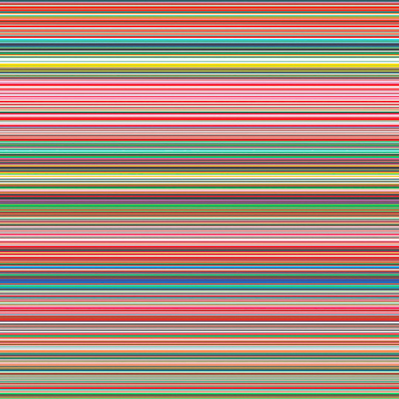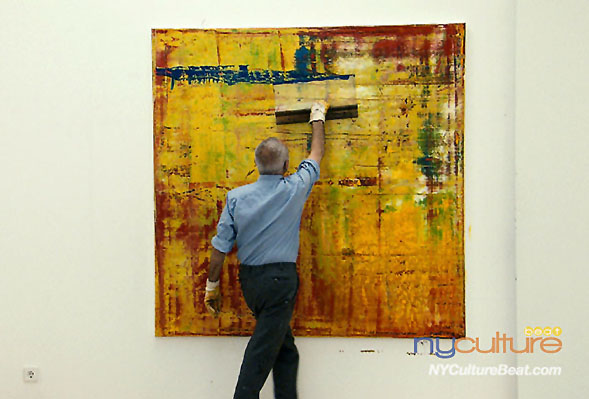게르하르트 리히터(Gerhard Richter) 신작전 @데이빗즈워너 갤러리(런던, 1/25-3/28)

Gerhard Richter
Dates: January 25—March 28, 2024
Location: David Zwirner (24 Grafton St., London)
David Zwirner is pleased to present an exhibition of new and recent work by renowned German artist Gerhard Richter at the gallery’s 24 Grafton Street location in London. This marks the gallery’s first presentation of Richter’s work in London since announcing his representation in December 2022, and follows the artist’s recent debut at David Zwirner in New York in spring of 2023.
This considered installation expands upon Richter’s sustained inquiry into the fixity of perception and reaffirms his unwavering commitment to the formal and conceptual possibilities of abstraction. Centrally featured are three of the artist’s celebrated abstract paintings, made in the years preceding his decision to move away from oil paint and turn toward drawing and installation with increasing dedication. An expansive group of new works on paper—some made with ink or pencil, others with a combination of the two—illuminates the newfound urgency and prominence that Richter has placed on method and technique in drawing.
Richter created the ink drawings, a number of which include unprecedented vividness of colour, by dripping the medium onto paper and shifting around the sheet to produce unexpected forms, further augmenting the improvisatory and captivating freedom of movement unique to this body of work. For the pencil drawings, Richter instead combines various elements from a limited set of forms and techniques—including meandering lines, broad tonal planes applied with angled strokes of graphite, and passages of smudging, hatching, and erasure—thereby uniting choice and chance through this infinitely generative process. These works on paper condense and distil the tenets that have remained central to Richter’s practice throughout his career. As noted by Dieter Schwarz, editor of the artist’s catalogue raisonné of drawings: ‘They are of stringent individuality and recognizably by Richter’s hand, not based on their signature style but rather because they make their theme the act of drawing itself, gauging the conditions of drawing.’1
Also featured are important recent works that illustrate Richter’s longstanding interest in the idea of reflection—in both the material and the phenomenological sense of the word. His large-scale paintings and room-sized installations, which are notable for their use of glass and mirrored surfaces, serve as sites for the perpetual creation and contemplation of a new kind of abstract image. On view is a work from Richter’s expansive Spiegel (Mirror) series, which the artist began in the 1980s; comprising wall-mounted panes of glossy tinted glass, they invite viewers to look both at and beyond one’s surroundings. A group of vibrant lacquer-behind-glass paintings from 2010 explore the dual role of paint as conceptual image and physical substance. These works eventually led to Richter’s development of the Strip paintings (begun in 2011), which are derived from a photographic reproduction of one of the artist’s abstract paintings that is then digitally divided, mirrored, and repeated into a glass-mounted print whose pristine surface removes all traces of its maker’s hand. Crucially, Richter classifies the Strips as “paintings” despite their computerised facture, thus positioning the works at a philosophical nexus in which they examine both the historical implications of painting as well as its future possibilities.
Gerhard Richter was born in 1932 in Dresden, Germany. He studied art at the Dresden Hochschule für Bildende Künste from 1951 to 1956, with mural painting as his main course of study. In 1959, Richter visited Documenta II, held in Kassel, Germany, an experience that inspired him to alter his artistic trajectory. After his escape from East Germany in 1961, he completed a second course of study at the Staatliche Kunstakademie in Düsseldorf. There, he united with fellow students Sigmar Polke, Konrad Lueg (later known as the gallerist Konrad Fischer), and Manfred Kuttner to collectively form the short-lived “capitalist realism” group.
From 1964 onward, Richter has had many solo exhibitions in renowned galleries and museums worldwide. The artist’s first solo exhibition in a public institution was held at the Gegenverkehr, Zentrum für aktuelle Kunst, in Aachen, Germany, in 1969. In 1972 he was selected as the only artist to represent Germany in its national pavilion at the Venice Biennale. Richter has exhibited at Documenta, in Kassel, Germany, more times than any other artist (1972, 1977, 1982, 1987, 1992, 1997, 2007, and 2017).
Richter’s work has been presented in numerous solo and retrospective exhibitions at important institutions worldwide, including the Kunstverein für die Rheinlande und Westfalen, Düsseldorf (1971, 1986); Kunsthalle Bremen, Germany (1975); Centre Pompidou, Paris (1977, 2012); Städtische Kunsthalle, Düsseldorf (1986); Neue Nationalgalerie, Berlin (1986, 2012, 2023); Hirshhorn Museum and Sculpture Garden, Washington, DC (1988, 2003); San Francisco Museum of Modern Art (1989, 2002); Tate, London (1991, 2011); Moderna Museet, Stockholm (1993); Art Institute of Chicago (2002); The Museum of Modern Art, New York (2002); Queensland Art Gallery, Brisbane (2017); The Met Breuer, New York (2020); and The National Museum of Modern Art, Tokyo (2022). In April 2023, the Neue Nationalgalerie in Berlin opened Gerhard Richter: 100 Works for Berlin. This special long-term presentation features works that the Gerhard Richter Kunststiftung gave to the museum on permanent loan in 2021, including Richter’s Birkenau cycle of large-scale abstract paintings from 2014.
Richter has been honoured with a number of significant awards, among them the Kunstpreis Junger Westen, Kunsthalle Recklinghausen, Germany (1967); Arnold-Bode-Preis, Kassel, Germany (1981); Oskar-Kokoschka-Preis, Vienna (1985); Goslarer Kaiserring, Goslar, Germany (1988); Golden Lion at the 47th Venice Biennale (1997); Praemium Imperiale Award, Japan Art Association, Tokyo (1997); Wexner Prize, Wexner Center for the Arts, Columbus, Ohio (1998); Foreign Honorary Membership of the American Academy of Arts and Letters, New York (1998); Staatspreis des Landes Nordrhein-Westfalen, Düsseldorf (2000); and the Kunst- und Kulturpreis der deutschen Katholiken, Deutsche Bischofskonferenz, Bonn, Germany (2004). In 2007 Richter received honorary citizenship of Cologne, Germany. In the same year, he designed a spectacular stained-glass window for the Cologne Cathedral. Works by the artist are held in important public and private collections worldwide. Richter lives and works in Cologne.
*Image: Gerhard Richter, Strip, 2011. © Gerhard Richter 2024 (25012024)

*현존 최고화가 리히터가 그리는 법, GERHARD RICHTER 'PAINTING', 2012
https://www.nyculturebeat.com/index.php?mid=Art2&document_srl=3878296





